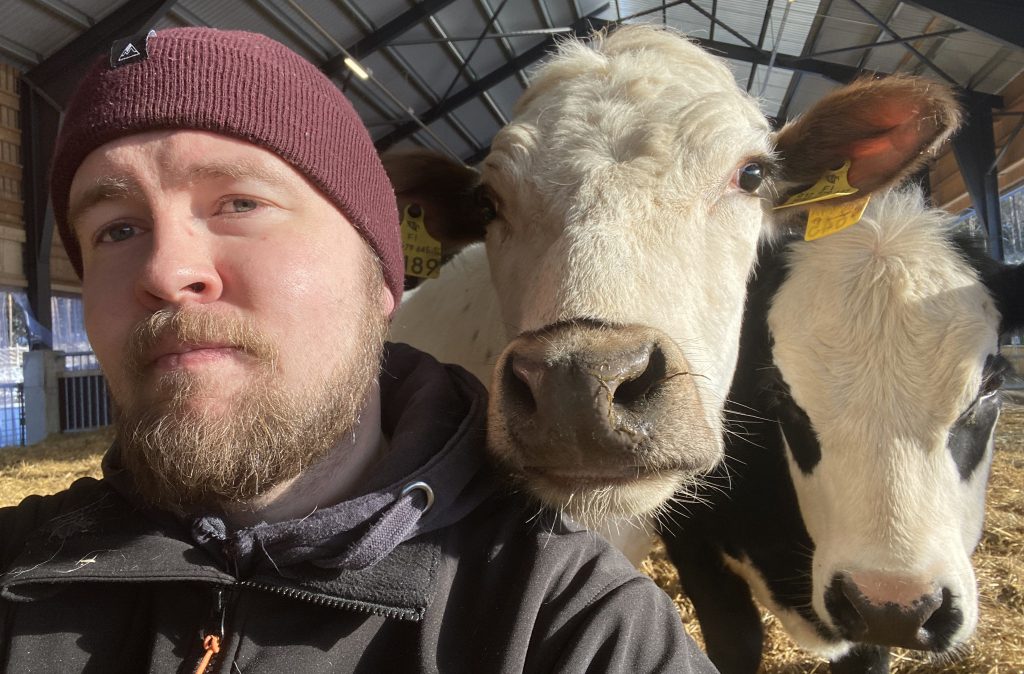Jussi Nissi: Cows are not the problem, but the system!
Jussi is a young farmer passionate about food production and carbon sequestration through sustainable farming. Jussi is now finalising his bachelors program at Häme University of Applied Sciences. Jussi is also attending Savory Institutes online course where he has expanded his knowledge of ‘holistic management’. Holistic management involves a combination of practices that ensure the health and wellbeing of land, plants, animals, and the community. Jussi is currently applying some of these practices and developing new methods at Qvidja Gård (manor house) in Southwest Finland. These are improving the quality of the soil and the wellbeing of the cows and lambs while capturing carbon from the atmosphere. In the near future, Jussi will take over his family farm and introduce his knowledge on sustainable farming, which he also hopes will set an example for other farmers to follow.

By Alberto Giacometti, Nordregio & Agnė Dapkuvienė
Journey
Jussi was raised on a traditional farm where things were done “the same way everyone else has been doing since the 50s”, but he was not interested in farming at all until recently, after 10 years working in the IT sector. “I was certain I was not going to be a farmer” Jussi notes. He moved to Tampere to study and work in IT, which at the time seemed like the right thing to do. But later on he realised that he is passionate about agriculture. It “started with small things - I got interested in food production, in the quality and sustainability of it”.
Eventually he decided to take a shot and switch his carrier to farming. At that point, his parents had retired and rented out the family farm. Therefore, Jussi applied for an apprenticeship position at Qvidja Gård to gain experience in sustainable farming and rotational grazing.
Qvidja Gård (manor house)
Qvidja Gård is a historic manor house located in Parainen in the archipelago outside of Turku, Finland. Today, the owners have transformed it into a farm committed to nutrient recycling and carbon sequestration. The owner, Ilkka Herlin, is a founding member and chairman of the board of the Baltic Sea Action Group (BSAG), a foundation aiming at restoring the ecological balance of the Baltic Sea. Carbon Action, one of the main campaigns of the foundation, brings together scientists, farmers and companies to develop approaches of regenerative agriculture that enable carbon storing. Today, some 100 farmers have joined the campaign, including Qvidja farm. The platform allows them to share sustainable practices and learn from each other. Qvidja Gård extends through over 100ha, mainly grasslands, where some 40 sheep with their lambs, 40 cows with their calves and some 15 horses with their foals grow in the open air. According to Jussi, the main objective is not producing meat, but capturing carbon from the atmosphere. At the same time, however, the farm aims to be a self-sustaining business.
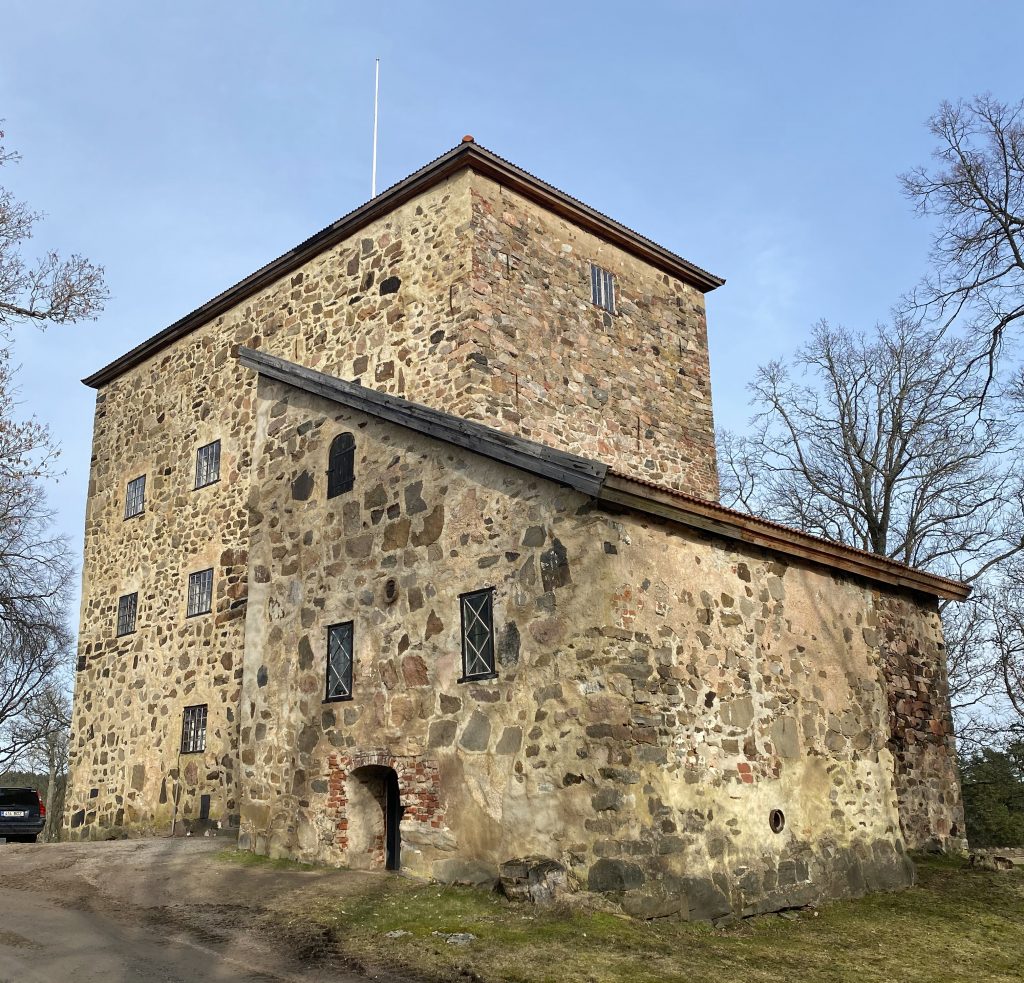
Solving farming problems through holistic management
Today, the meat and dairy industry is under enormous pressure for its share in global carbon emissions. However, Jussi believes that “cows are not the problem, the problem is the system”. Most farms today use highly unsustainable practices ignoring nature’s own capacity to regenerate and recirculate carbon. In many scale farms, cows never see the open air and are fed with corn, grains, and grass that is cut and collected by polluting machines. “Farmers think that grazing is time-consuming and worthless”. And even when cows are allowed to graze, they are left to roam free in large extensions of land for long time “leaving the grass and soil very degraded”.
However, better management practices can result in dramatically different outcomes. Jussi explains that “cows’ instinct is to eat as much as they can, because food is limited, and then leave the eaten parts to rest”. Therefore, if instead of roaming free, cows are given only a portion of the pasture to graze, they will quickly eat that, before they are moved to the next portion. This technic is called ‘rotational grazing’ and it mimics the wild herds movement. Moreover, the time given for the pastures to rest is pivotal in allowing its recovery and for carbon sequestration. When cows are moved from the eaten pastures, they leave behind their dung and urine, which is quickly reabsorbed by the plants themselves if they are left to rest. Apart from catching more carbon from the atmosphere, “if you graze well, the quality of the soil improves, and it becomes more resistant to times of harsh weather”.

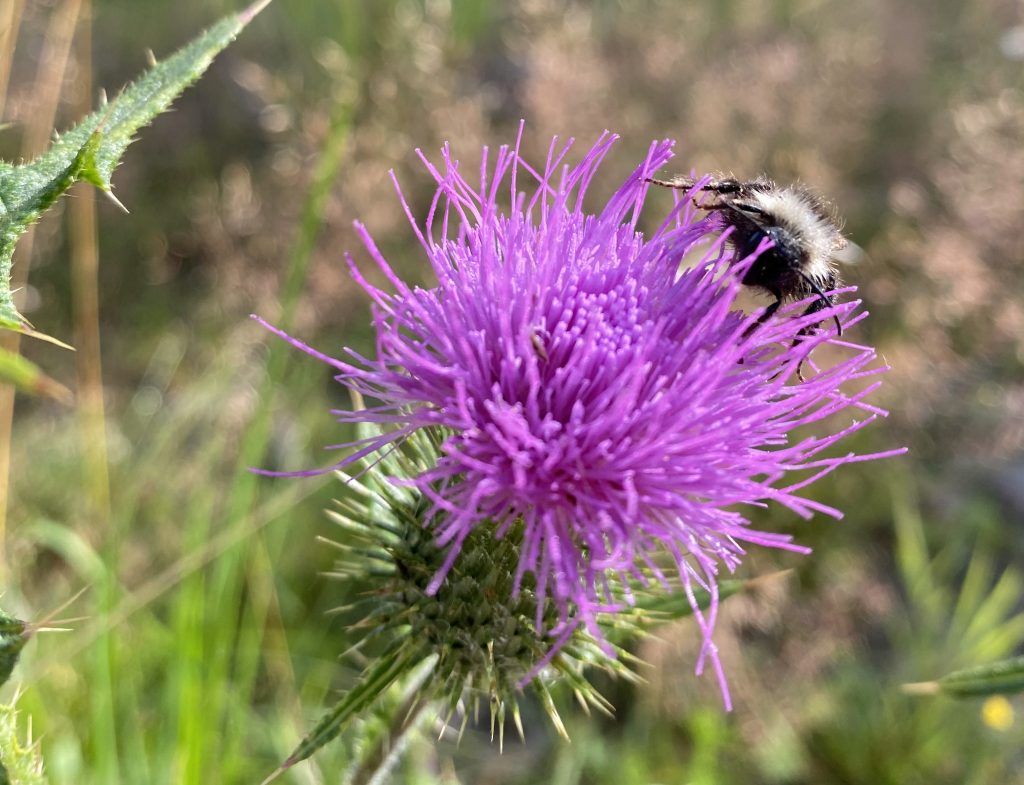
At Qvidja Gård, Jussi uses a combination of management methods mostly based on ‘holistic management’. He applies rotational grazing by delimiting parts of the fields with a movable wire, so as cows continue to eat, he moves the wire forward roughly once a day leaving the parts behind to rest and regrow. This also means less work as the cows eat on their own out in the pastures. Additionally, Jussi seeds some 15 types of grasses on to the fields, compared to some 2-to-3 used in most farms. “This is much better for the soil, and for pollinators too” he explained, and “the different grasses compensate each other needs, the nutrients they use, sun space, types of weathers, and humidity”. Some grasses have longer roots than others, so the uptake of nutrients is more distributed across the soil depth. As the soil and grasses are healthier and grow densely, there is no need to use herbicides as the weeds do not have enough space to grow.
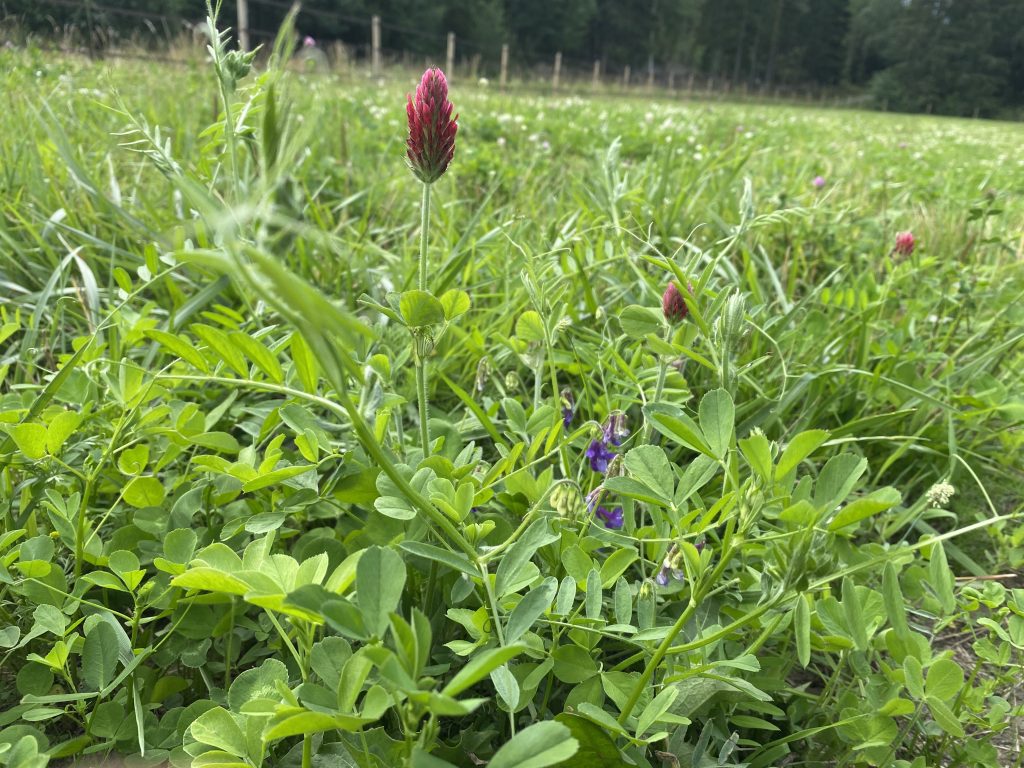
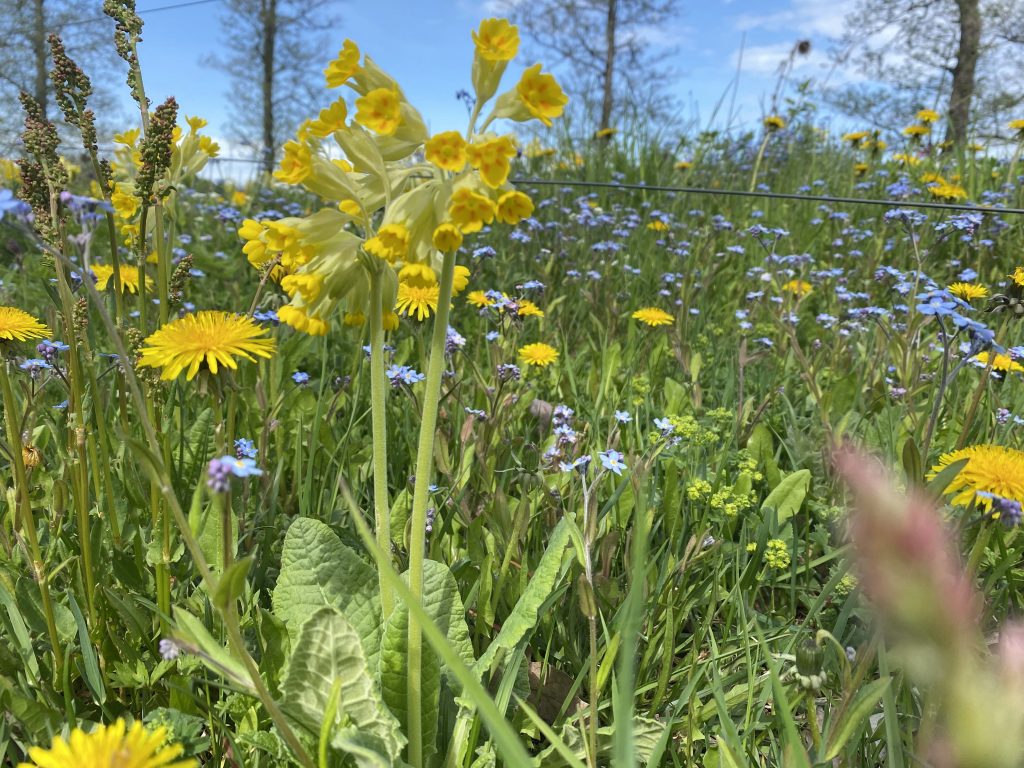
With this and other practices, the use of machines, pesticides and fertilisers is reduced to the minimum, while maximising carbon sequestration and ecosystem’s health. Jussi points out: “we produce more on the same amount of land than others by managing the pastures correctly”.

Background Holistic Management
Holistic management or ‘holistic planned grazing’ is a method for cattle grazing, originally developed by Allan Savory, a world recognised ecologist, livestock farmer, and co-founder of the Savory Institute. According to Savory, we have been led to believe that cattle grazing is the cause of desertification, and particularly that scale farming leads to overgrazing and soil degradation. However, he notes that this generally accepted assumption shows that we have failed to understand the dynamics of grasslands ecosystems. In nature, “the soil and the vegetation [in grasslands] developed with very large numbers of grazing animals”. Now, because these cattle are exposed to “ferocious pack-hunting predators, their main mechanism of defence is to get into herds – the larger the herd, the safer the individuals”. However, the key difference from standard farming today, is that wild herds have to keep moving to stay safe. Savory explains that “it is that movement that prevented overgrazing”. “Large herds dung and urinate all over their own food”, fertilising the soil, “while the periodic trampling [walking or stepping over] ensured a good cover of the soil”. In contrast, in the absence of grazing animals the pastures undergo a different process of decay called oxidation. Oxidation is a slow process that ends up killing grasses, “leading to a shift to woody vegetation and bare soil, releasing carbon”. To prevent that process, fire has traditionally been used to remove the dead material to make space for plants to grow. However, fire leaves the soil bare, releasing carbon and other damaging pollutants.
Based on these realisations, Allan Savory developed ‘holistic management’, which essentially consists of planning livestock grazing by mimicking nature. It consists of monitoring grazing moves to consider the time that a plant is exposed to a grazing animal so that the plant’s recovery can be planned accordingly. It recognises the needs of land, plants, animals, and the community as equally important and provides a framework for managing the four basic ecosystem processes: the water cycle, the mineral cycle (including the carbon cycle), energy flow, and community dynamics. This method offers to “transform whole landscapes and keep them healthy”. Savory Global claims that the results of Holistic Management are dramatic in transforming whole landscapes and keeping them healthy. Holistic management proved successful in recovering vast grasslands in process of desertification in various parts of Africa, Mexico, USA, and Patagonia in South America. Today, the Savory movement extends throughout the world with many member farmers adopting similar practices. The Savory institute offers education programmes to farm managers and carries research on holistic management. Moreover, the Savory Global Network accredits professionals and members adopting holistic management.
Impact
“The potential of holistic management is huge” states Jussi, “by changing 10 to 15 percent of the agriculture globally we could store as much carbon as farming has ever produced”. Jussi thinks this is realistic scenario based on Qvidja’s own experience: “we are carbon negative in this farm, we fix more than we produce”. The levels of nitrogen and carbon in the soil in Qvidja are monitored and measured by the Finnish meteorological institute. Through the MULTA project, the Finnish Meteorological Institute is developing a groundbreaking verification system for carbon sequestration to be used in policy and markets. “Everything we do produces emissions – so the question is how much we emit and how we counteract it”. With sustainable farming practices, we are able to fix as much carbon in the soil as we produce. But “this is not the case in the huge ‘concentration camps’ where cattle grow eating corn and soy, which is heavily damaging and polluting”.
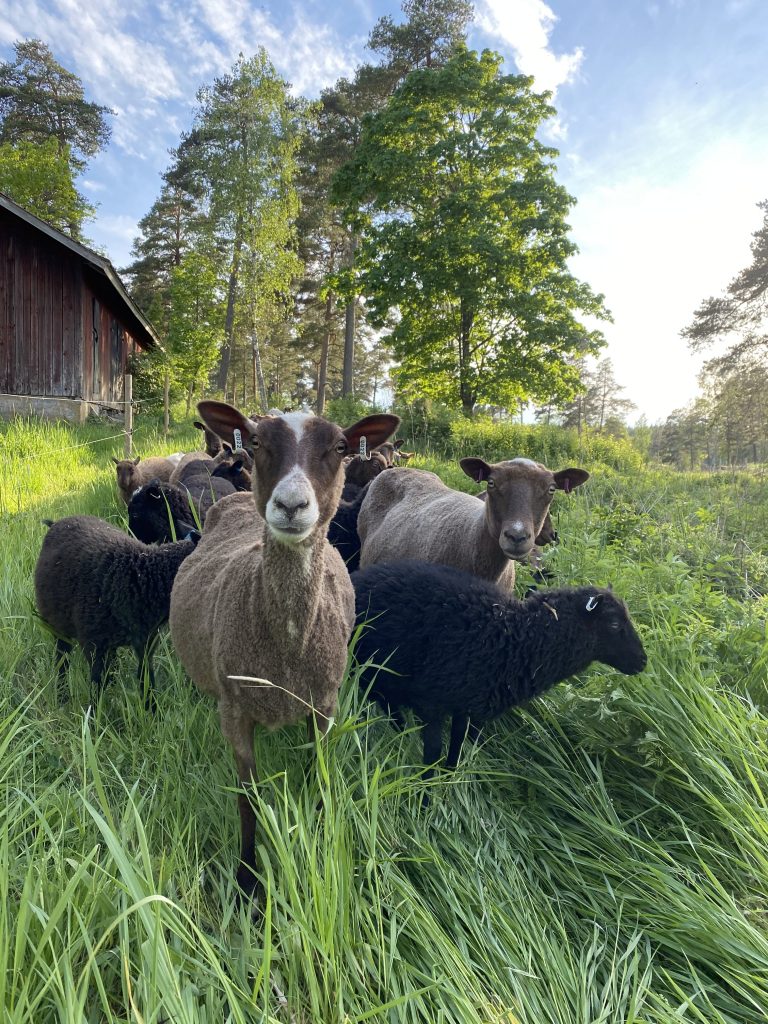
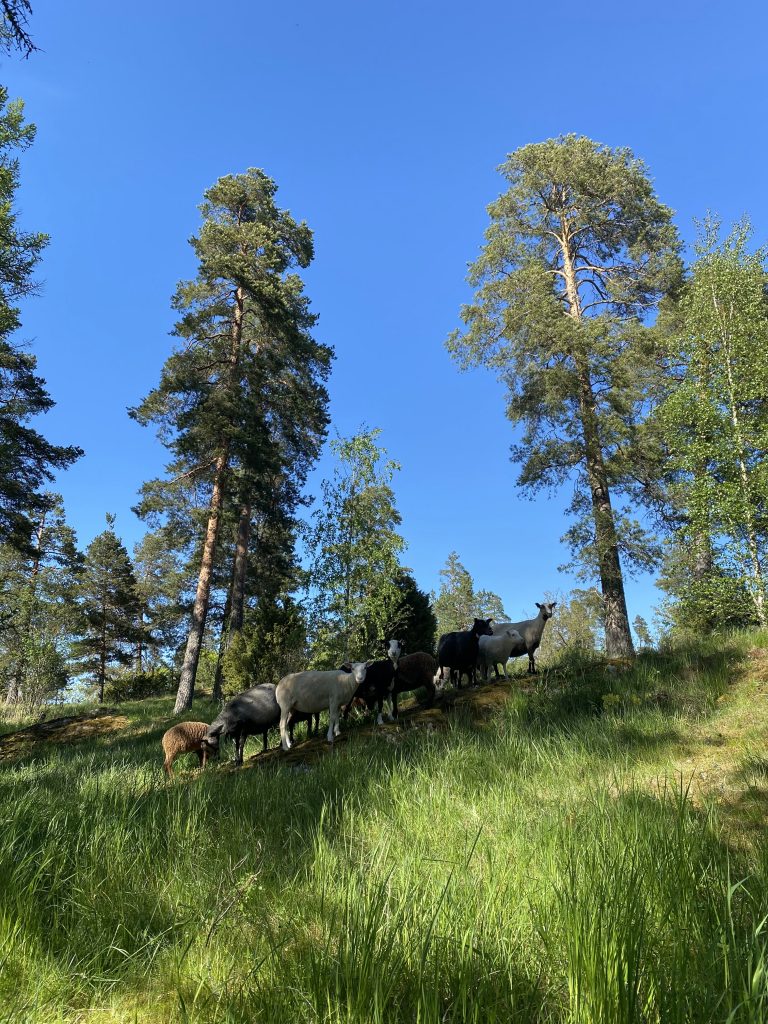
There are reasons to be hopeful. In Finland, the tide seems to be changing. Valio, the largest milk processor in Finland, controlling around 85% of the market, has set the goal of becoming carbon neutral by 2035. Being a cooperative owned by farmers, Valio reached this goal in consensus with farmers, which will together work towards this objective. However, change cannot be expected from farmers alone. It depends on the consumers and regulators. “We are used to cheap meat and this comes with a price”, and a high ecological cost. Consumers need to become aware of what they consume and make the active choice to buy more local products and from responsible producers. Regulations and certifications need also to follow this ambition to provide the consumer with the sufficient information to be able to make choices.
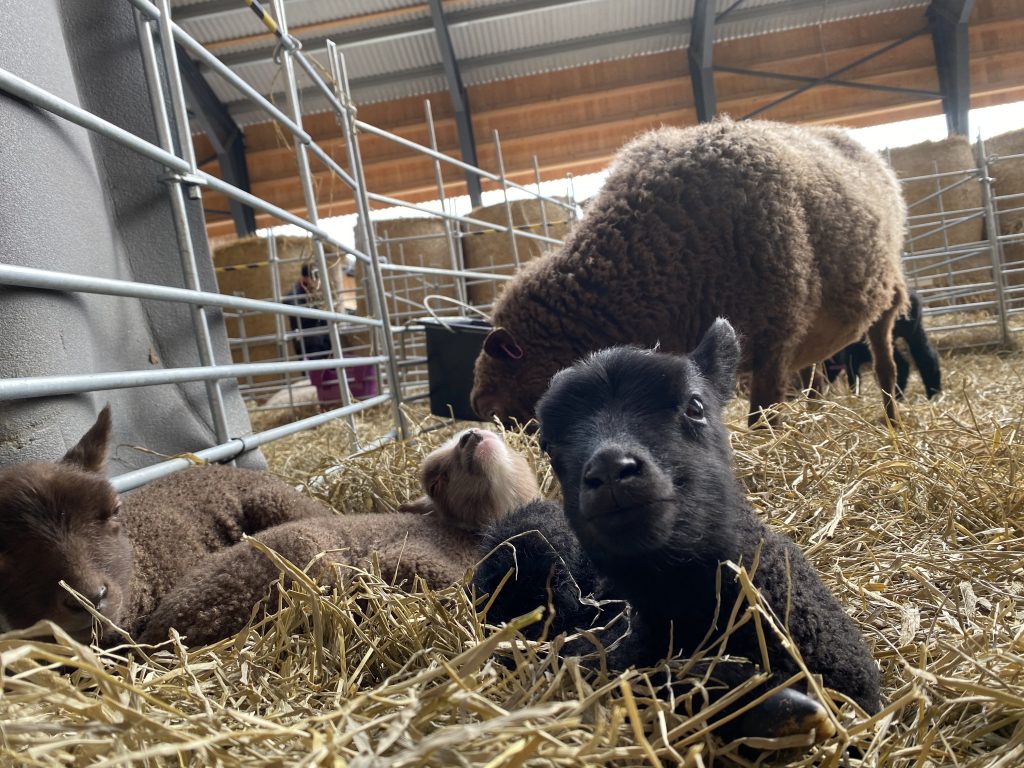
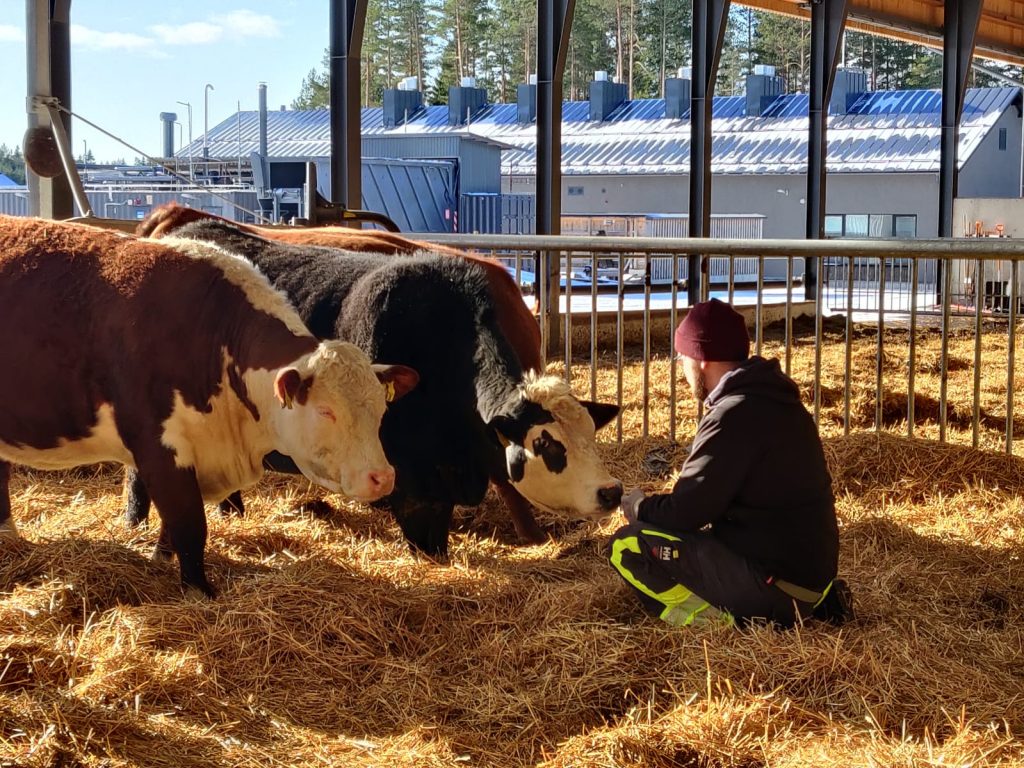
Challenges
According to Jussi, important reasons for many farmers not to improve their management practices are a combination between tradition, lack of incentives and a ‘broken system’. Holistic management practices from a business perspective “make sense”, Jussi explains, “lower tractor and machine work represents lower costs”. Thus “farmers are not sacrificing earnings because of these practices; it is a matter of tradition”. However, the transition to outdoor grazing, growing new pastures, amongst other practices, requires investment and time. Farmers investment capacity should not be underestimated in a system where profit margins for producers are extremely low, while at the same time they absorb most of the risk.
Agricultural policies are also not ambitious enough to favour good practices. Strict agro-environmental requirements - no matter how important - are usually watered down in every new programming period after long debates between member states and institutions. Ineffectively distributed subsidies push out the small and medium farmers (or forces them to expand) and leave big scale agribusinesses to thrive by applying management decisions that in the long run are harmful to the environment. In other words, bottom-low prices forces farmers to compete with volume regardless of the environmental toll this represents. And though the new European Commission was keen on pushing forward the European Green Deal, with recent Covid-19 crisis it is unclear if the Commission will properly stand their ground to reach carbon neutrality goals.
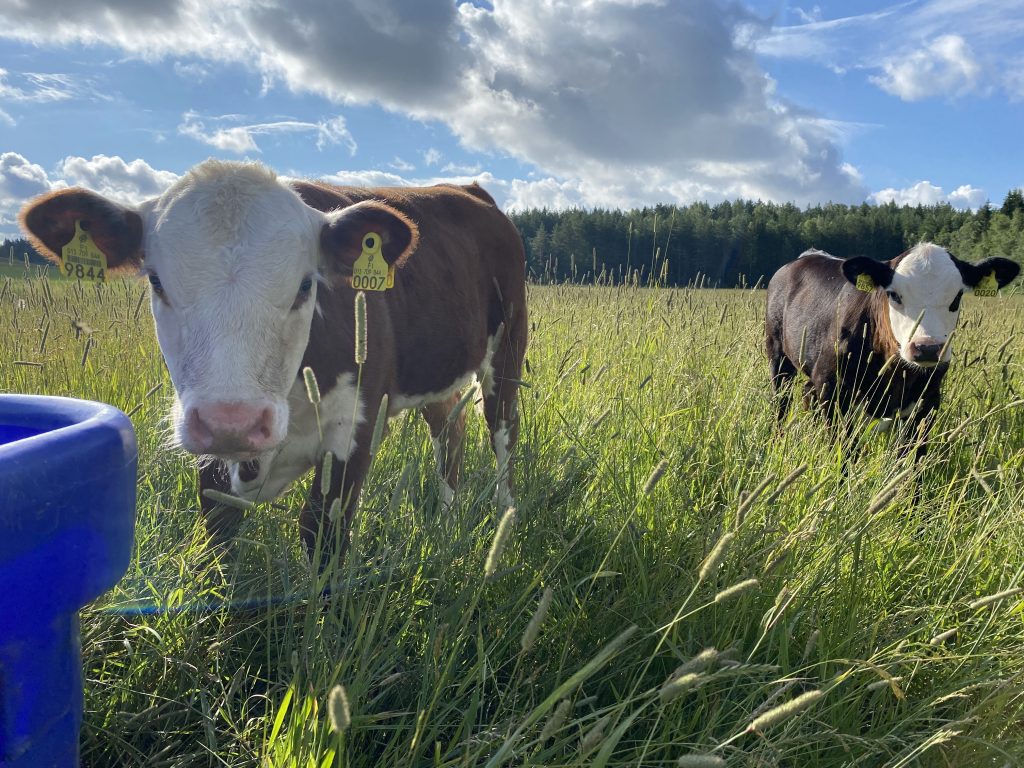
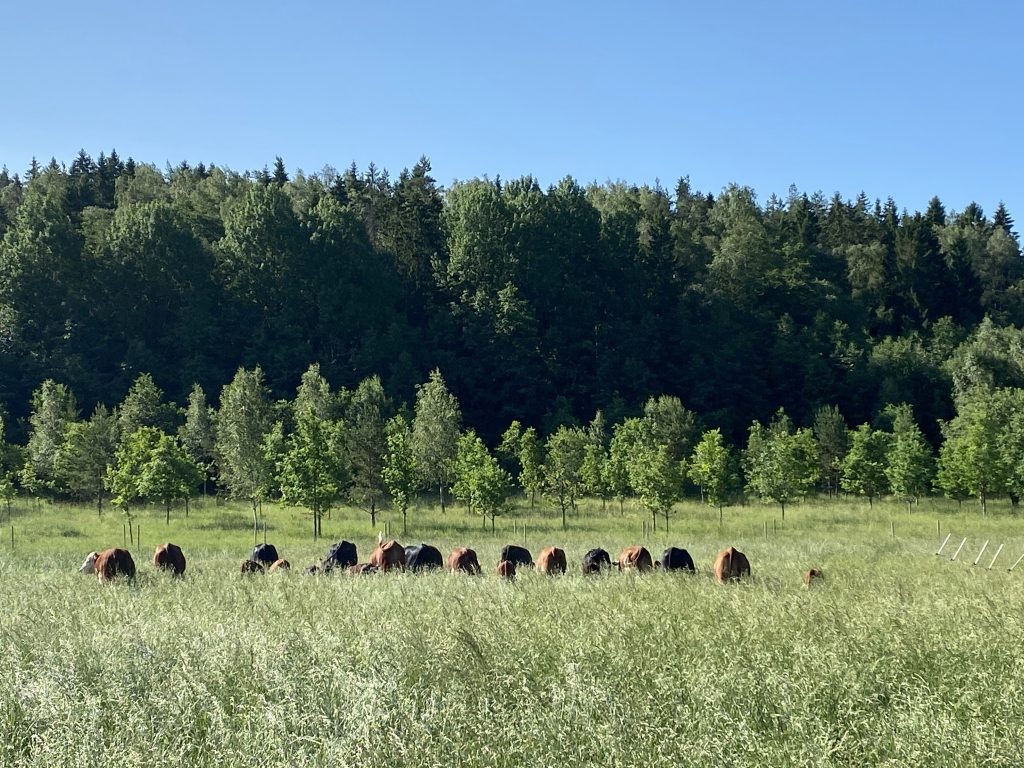
Next steps
On the short run, Jussi’s ambitions are to obtain his bachelor’s degree and to gain substantial practical experience at Qvidja Gård. After that, Jussi plans to take over his family farm and do it for himself. More specifically, he wants to apply the sustainable farming practices in his farm and teach others by his example. Jussi’s family is supportive of his decision, and most of all, for him to rescue heritage.
Photos: Jussi Nissi archive.
